Why do a DNA test for genealogical research
What is classical genealogical research based on documents (civil registry office records, registers, revision tales, databases of war participants, etc.) is understandable. This is a classic, this is a guaranteed confirmation of the accuracy of information. But there are situations when there are simply no documents (fire, war on the territory of the archive) or when a person simply does not know his real names and place of birth (adoption, for example). You can, of course, search everywhere and at once, but this is very difficult both in time and financially, especially if a person or ancestors moved geographically.
Then there is another way to find information about your relatives - this is DNA analysis.
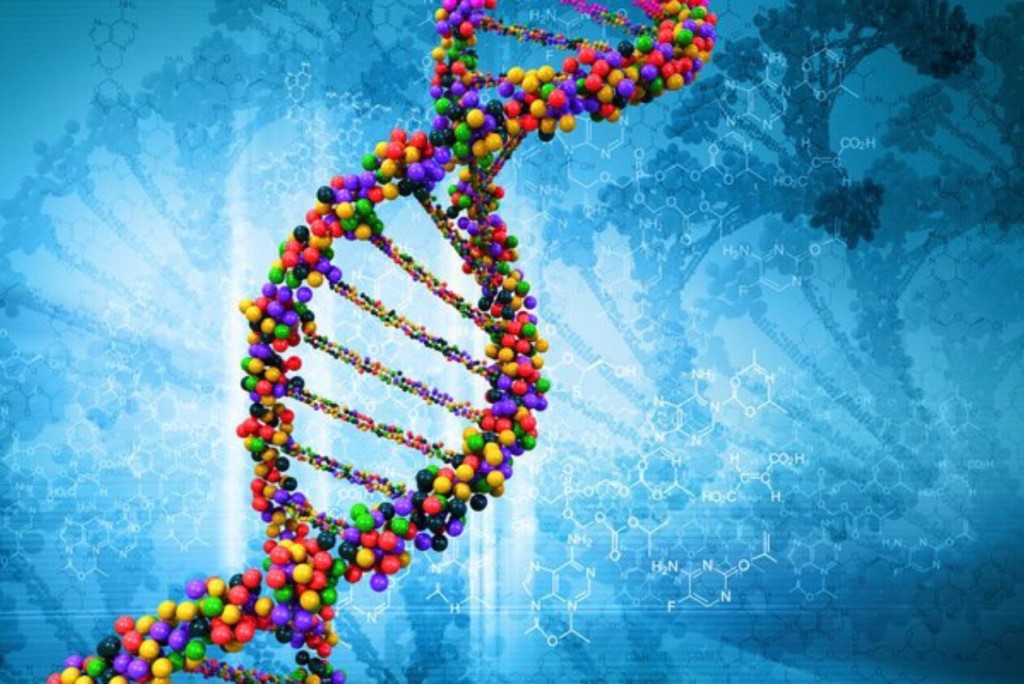
Everyone knows that DNA is passed down from generation to generation, but how can this help us? It has been scientifically proven that all people living on the planet have one common ancestor in the male line and one common ancestor in the female line, i.e. all of humanity comes from one man and one woman (genetic Adam and Eve, which have nothing to do with the biblical). Gradually, from generation to generation, irreversible mutations occur in DNA, which "give rise" to separate haplogroups (DNA branches) that go back to a common ancestor and are passed on to all descendants, through which the chain can be traced back to the oldest ancestor of "Adam" with the same root haplogroup. In general, it is better to read a separate literature on this topic, but the meaning should be clear - traceability of kinship through generations through DNA testing.
:
, Y- – – 100 . . – – , 150 . . , Y- .
?
DNA tests can be classified into 3 types: autosomal "common" test ( au-DNA ), male line ( y-DNA ), female line ( mt-DNA ).
The autosomal test is the most popular. It finds a match with all tested, with whom you will have a common ancestor in about 8 generation. Why is it so inaccurate? There are many nuances, for example, in percentage terms, fourth cousins at the same level of the family tree and a second cousin with a difference of two generations with you will have approximately the same percentage of DNA part coincidence. It all depends on the age of the person being tested, more precisely from the number of generations to the common ancestor.
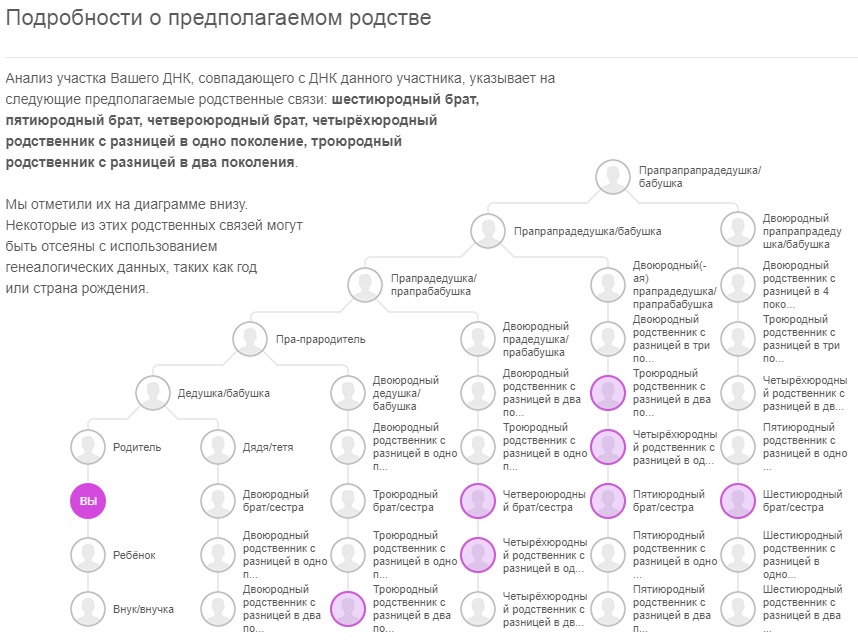
DNA is divided in theory like this:
- you have 100% of your DNA and the length of the DNA molecule is 7000 cM (Santimoorgan)
- , 50% — 3500cM
- 25% — 1750cM
- 3 12,5% — 875cM
- 4 – 6,25% — 440cM
- 5 – 3,1% — 220cM
- ...
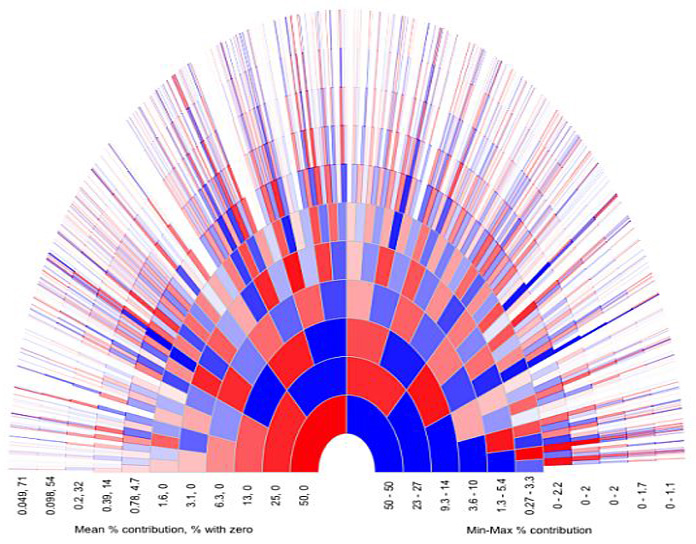
This is an approximate chart in percent and below in units is cm .
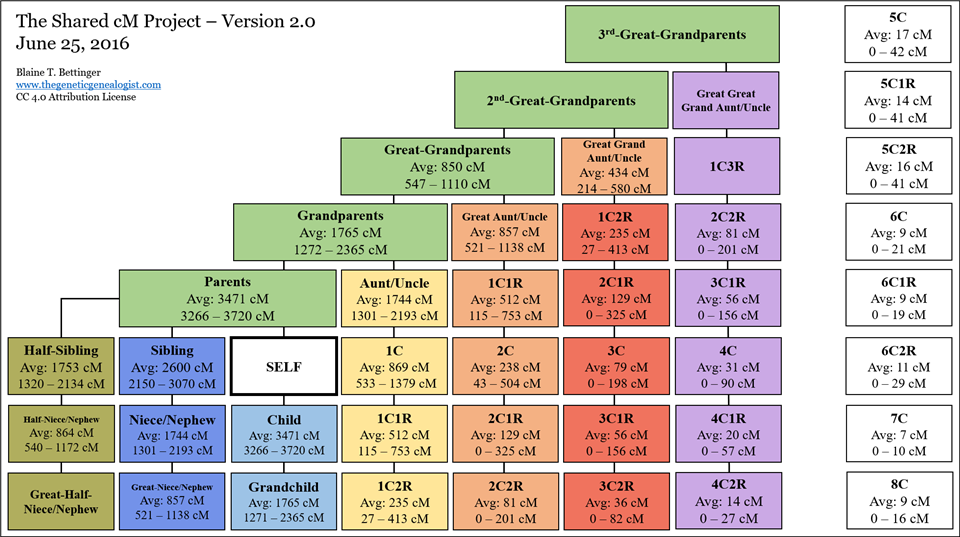

For example, my ancestor in the 4th generation, who is also a common ancestor in the 4th generation for the relative whom I found, gives a match between both of us at 85 cM, and between me and his father - 128 cM. Because those same "calculated" 6.25% before the great-great-grandfather in the 4th generation "blurred" the DNA of people along another related branch, so it turns out already 6.25% / 2 = 3.1 / 2 = 1.56 / 2 = 0 , 78% or estimated 54.68 cM. In reality, the test shows me even more - 85 cM.
I did not know about this relative, but when the full name appeared on my hands and his family tree, common points were immediately found and it became clear who was to whom and whom. Sites with test results, on the other hand, give coincidences of 0.2% and 0.1%, so the relationship can be very distant.
Male line test ( Y-DNA ) and female line test ( mt-DNA) are more interesting, although less popular due to their high cost. The point is that in a straight male line from grandfather to father, from father to son, an invariable part of DNA is transmitted, by which it is possible to determine a common ancestor at least for an interval of 100 years, at least 10,000 years. Similarly, along the female line, from great-grandmother to grandmother, from grandmother to mother, from mother to daughter, from daughter to children of any gender (but it will not be transmitted further on the boy). This test will not show you many percentage matches, but it will show you where in the "DNA strand". You can definitely understand that your distant ancestor was from the "Finns", for example, even if the last few generations have always lived in Ukraine or Russia and the names of great-grandfathers you know are all Slavic.
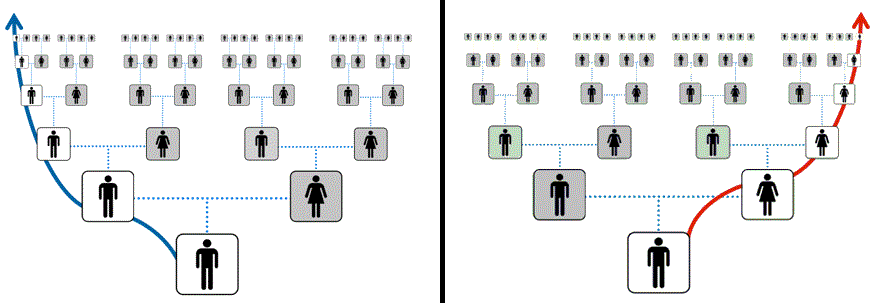
Combining these tests will give more accurate and interesting results, but it is more expensive, so for a start it is better to limit yourself to the "autosomal" test, which will give you a set of chromosomes with a set of mutations from all ancestors.
What results will I see after I do a DNA test? What to do next?
The results of all those who made the test go to a single database of the laboratory. If a person has not deliberately hidden his data, then for everyone with whom at least a small piece of DNA matches, this person will appear in the list of "matches".
The sites themselves build "coincidences" according to the degree of closeness of kinship and assume in which generation you have a common ancestor. All users are invited to fill out a brief information, where you can indicate the surname in the family, the place of residence of their ancestors, their contact information. Accordingly, in addition to just the percentage of coincidence with people, it becomes possible to search among the matched names and cities of residence and other additional details.
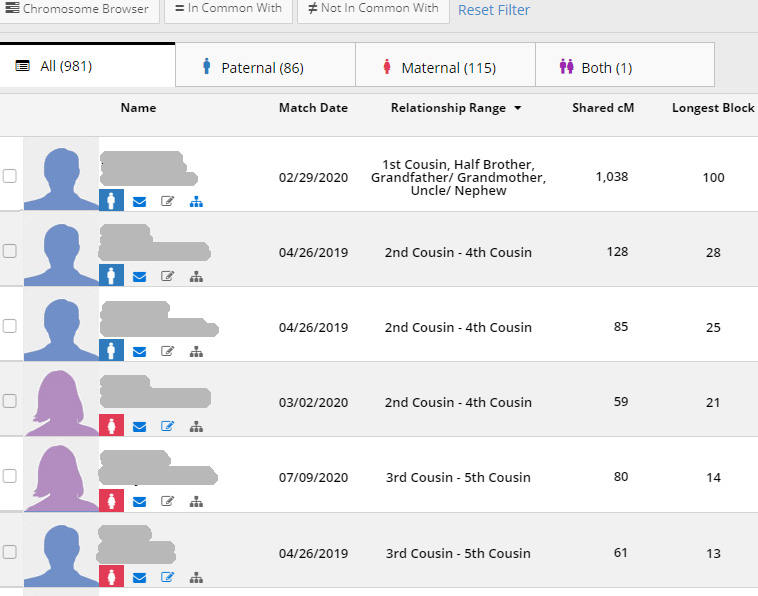
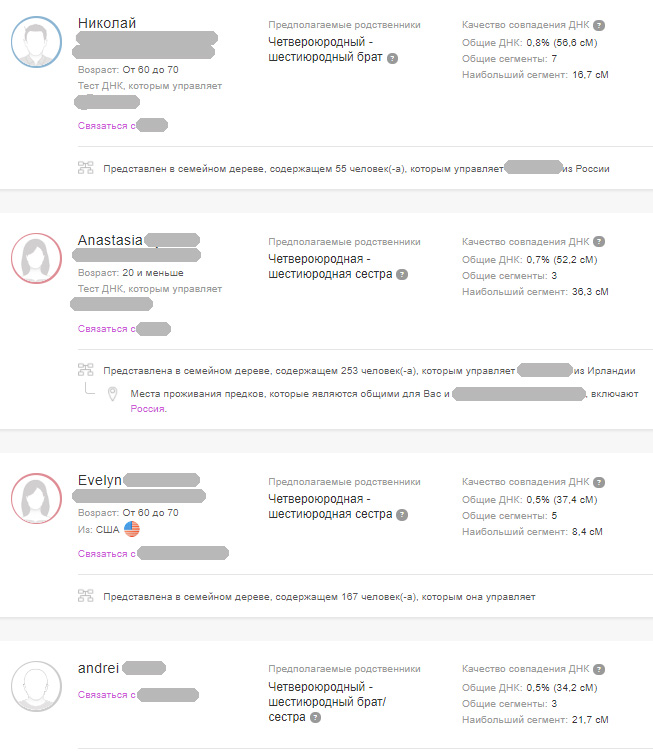
Having coincidences with a sufficiently high percentage, it makes sense to look for surnames in your tree, as well as just contact people by their contact e-mail and communicate, describing the coincidence and asking each other. A common ancestor in the 6-7th generation, and even along the female line, for example, you cannot easily calculate, but if the surname has not changed, or if the place of residence is the same for both known ancestors, this will give you a search direction and extra clues. Why is it not so simple? Because already in the 4th generation you have 16 ancestors and the same number of surnames by their birth; then we multiply each generation by 2.
The question of choosing a laboratory to take a test is a separate, big question. There are many nuances, for example, the number of people tested in the databases, as well as the ability to upload test results to other sites. I will also leave the questions of determining ethnic origin outside the brackets, this is by default in all tests, but this is unlikely to help in finding ancestors.
Ethical and protection issues of personal data and DNA results
Laboratories (especially foreign ones) are actually very serious about the protection of personal data and no one will get access to their results just like that. The match search function is built in initially, so if you do not want to unexpectedly find illegitimate children, then it is better to indicate a not quite real surname and first name in the profile of the test taker, and also create a separate e-mail to receive letters from possible matches (or not do the test at all). In other cases, I personally do not see any crime in storing a DNA sample in any databases. You can pull by the ears the option of access to DNA results by law enforcement agencies, but you are not doing anything illegal, you have nothing to fear ?!
Well, in order to search for relatives, on the contrary, you need to indicate real data, indicate additional information on the searched names and areas, then the chances of finding someone will significantly increase.
DNA Testing Summary
DNA testing is a good helper for researchers of its kind, especially if you have strong dead ends in searches related to the loss of documents or family ties. In cases of active searches on the part of those who have lost their memory or adopted, this is generally the recommended tool in the search.
Which test to choose and how much it costs - I will tell you in the second part , about the nuances of buying a test - in the third part , and what can be seen in the results and how it helps in searches - this is already in the fourth part of the article.